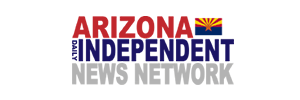“At the core of an IB education, starting with our youngest students is the aim to develop caring young people with a commitment to action and service…It is also essential in developing in them the drive to become an agent of social change in our ever evolving societies where there is still so much to do to reach an ideal of social justice,” Monique Seefried, president of the IB Council of Foundations TUSD won a $6.4 million grant from the U.S. Department of Education to help increase school choice programs and maintain diversity.
Unfortunately the grant does not require the district to offer successful programs, just those with which they might attract kids. To that end, the Arizona Daily Star reported this past summer that the Governing Board voted to spend $92,000 on a marketing campaign to, “attract non-minority students to three of its magnet schools.”
In TUSD tradition, they district opted to establish new and very expensive magnet school programs such as International Baccalaureate, or the absurd Reggio Emilia programs rather than expand those existing magnet programs, such as the highly successful “Back to Basics” program at schools like Dodge, which enjoys a waiting list for admission.
International Baccalaureate sounds glamorous and who wouldn’t want something like that for their kids? It sounds like the Cadillac of curriculum. No, the Mercedes of curriculum. However it is a lemon, and across “the pond” the Brits are tossing it into the scrap heap of clunkers. Due to economic conditions, the Great Britain government is cutting education funding and the extremely expensive, highly political and academically unproven program is the first to go. In keeping with TUSD’s counter-intuitive choices, it only makes sense that TUSD is signing a long term lease.
TUSD has introduced International Baccalaureate programs into Cholla High School, and both Safford and Robison are awaiting IB authorization. According to IB researchers, this authorization process is expensive and risky. “To start, a schools pay application process fess that involve three stages that must be successfully completed: a feasibility study (where teachers and administrators undertake IB-approved professional development); a trial implementation period of at least 12 months, during which the school will be visited and supported by an IB representative; and an authorization visit, where a judgment is made about the extent to which the school is suitably prepared to offer the programme.”
Once that is done there is no evidence that the program works to reduce the achievement gap. According to Rob Stein, a well-respected educator in Colorado, “There is no available evidence that the IB will increase student achievement in DPS schools or that the IB has had a positive effect on student achievement in similar districts or schools. A thorough search of the literature has netted no empirical studies on the effects of IB on student achievement.”
“Schools with IB programs tend to have higher test scores than average, but this can be explained as a function of student selection rather than student learning. In cases such as the Academy School District, a high-income, highly educated community has schools with high test scores. In Denver’s two IB or IB-like programs, students are pre-selected for the programs based on their prior test scores and academic achievement; therefore, it is no surprise that they score high once they are admitted into the program. There seem to be no available examples of IB schools where high student achievement can be explained by anything other than demographics or student selectivity.”
“In sum, there are doubtless many potential benefits of the IB model, but the model is not proven to improve student achievement in schools with low-income populations, to narrow the achievement gap, or to bring low-achieving students up to proficiency in reading, writing or mathematics.”
In a district that is constantly laying off teachers and counselors, closing schools, and crying poor, the travel costs alone associated with teacher training should have been enough to prevent adoption of the curriculum. For the past two quarters, travel costs to the district have totaled a whopping $45,500 plus.
According to Tucsonans United 4 Sound Districts website, on “July 30, 2009, a TUSD administrator gave a presentation to the school board that included a rough estimate to implement an International Baccalaureate program in one high school. The figure was $100 – $300 thousand annually for 1 to (possibly) 3 years. Thereafter, “recurring costs” were estimated at $100 thousand per year.” Below is what has transpired since IB was implemented:
International Baccalaureate “Diploma Program” costs for just Cholla High Magnet School.
FY 2008-2009: $302,487* (first year of IB program implementation; student participation: 42 juniors; no seniors)
FY 2009-2010: $619,259* (second year of IB program implementation; student participation: 32 seniors; juniors ?)
Total expenditures are likely higher — the amount shown here represents only the total of what was contained in the TUSD Budget Books (from Desegregation/OCR monies).
The TUSD employee assigned to “recruit” students to the IB program is paid $55,715 a year. According to the TUSD website, “the salary schedule for the 2011-2012 school year is effective July 1 with a starting salary of $33,948.80 (includes a base salary of $31,727.85 and a supplemental amount for classroom site funding, contingent upon funding from the State of Arizona).”
But who needs one more good inexpensive classroom teacher when you can hire a salesman for more money?
